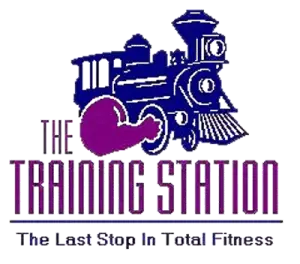
The Benefits of Weight Training
by Doug Walker
 Public health guidelines primarily focus on the promotion of physical activity and steady-state aerobic exercise, which enhance cardiorespiratory fitness and have some impact on body composition. However, research demonstrates that resistance exercise training has profound effects on the musculoskeletal system, contributes to the maintenance of functional abilities, and prevents osteoporosis, sarcopenia (loss of body mass),lower-back pain, and other disabilities. More recent seminal research demonstrates that resistance training may positively affect risk factors such as insulin resistance, resting metabolic rate, glucose metabolism, blood pressure, bodyfat, and gastrointestinal transit time, which are associated with diabetes, heart disease, and cancer. Research also indicates that virtually all the benefits of resistance training are likely to be obtained in two 15 to 20 minute training sessions a week. Sensible resistance training involves precise controlled movements for each major muscle group and does not require the use of very heavy resistance. Along with brief prescriptive steady-state aerobic exercise, resistance training should be a central component of public health promotion programs.
Public health guidelines primarily focus on the promotion of physical activity and steady-state aerobic exercise, which enhance cardiorespiratory fitness and have some impact on body composition. However, research demonstrates that resistance exercise training has profound effects on the musculoskeletal system, contributes to the maintenance of functional abilities, and prevents osteoporosis, sarcopenia (loss of body mass),lower-back pain, and other disabilities. More recent seminal research demonstrates that resistance training may positively affect risk factors such as insulin resistance, resting metabolic rate, glucose metabolism, blood pressure, bodyfat, and gastrointestinal transit time, which are associated with diabetes, heart disease, and cancer. Research also indicates that virtually all the benefits of resistance training are likely to be obtained in two 15 to 20 minute training sessions a week. Sensible resistance training involves precise controlled movements for each major muscle group and does not require the use of very heavy resistance. Along with brief prescriptive steady-state aerobic exercise, resistance training should be a central component of public health promotion programs.
Copyright 2001 American Health Foundation and Academic Press.
An effective program can benefit your body in the following areas:
Health:
- Increases HDL – High Density Lipoprotein (good cholesterol)and decrease LDL – Low Density Lipoprotein (bad cholesterol).
- Reduces risk of diabetes and insulin needs.
- Lowers risk of cardiovascular disease.
- Lower high blood pressure.
- Lowers risk of breast cancer – reduces high estrogen levels linked to the disease.
- Decreases or minimizes risk of osteoporosis by building bone mass.
- Reduces symptoms of PMS (Premenstrual Syndrome)
- Reduces stress and anxiety.
- Decreases colds and illness.
Strength:
Increased muscle strength, power, endurance and size with enhanced performance of everyday tasks. You willbe able to do everyday tasks like lifting, carrying, and walking up stairs with greater ease.
Flexibility:
By working the muscles through a full range of motion, weight training can improve your overall body flexibility. Increased flexibility reduces the risk of muscle pulls and back pain
Likelihood of Injury:
Strong muscles, tendons, and ligaments are less likely to give way under stress and are less likely to be injured. Increased bone density and strength reduces back and knee pain by building muscle around these areas.
Body Composition:
Boosted metabolism (which means burning more calories when at rest) with reduced body fat. Your overall weight may not change, but you will gain muscle and lose fat. Over time you should notice decreases in waist measurements and body fat measurement.
Muscle Tone:
The conditioning effect will result in firmer and better-defined muscles.
Posture:
The way you sit and stand are influenced by the health of a network of neck, shoulder, back, hip and abdominal muscles. Stronger muscles can help you stand and sit straighter and more comfortably. You may notice improved balance and stability.
State of Mind:
As you begin to notice the positive physical changes in your body and develop a regular exercise routine, your ability to handle stress effectively will improve. Weight training allows you to sleep better, i.e., fall asleep quicker and sleep deeper. Clinical studies have shown regular exercise to be one of the three best tools for effective stress management.
In general, resistance training lowers mortality rates at all ages from all causes.
For more information on the benefits of strength training:
Strength training’s 7% solution By Nanci Hellmich, USA TODAY
Physical Activity and Older Americans
Potential health-related benefits of resistance training By WinettRA, Carpinelli RN.
Basic principles
Type of lift – you need to tailor your workout to address specific body areas. For example, if you want bigger and stronger arms, you need to use exercises that target those particular muscles.
Intensity – the amount of effort, there are a number of ways to increase the intensity, most of them considered “Weider Principles”, cut down on rest times, super set, rest-pause, etc…
Volume – the quantity of your workouts or duration. You can increase or decrease the volume by either training more or less often per week or by training for longer or shorter periods of time. (see variety)
Variety – switching around your workout routine, vary your workouts by changing exercises, the rep scheme or your training volume. Variety challenges your muscles and forces them to adapt with increased size and strength.
Progressive overload – gradually increasing your weights forces your muscles to grow stronger and larger.
Rest – you need to rest between sets. If your goal is muscle size or endurance, rest for 30-60 seconds or so. If you want muscle strength, allow up to 2-4 minutes between sets.
Recovery – muscle needs time to repair and grow after a workout. A good rule of thumb is to rest the muscle group for at least 48 hours to allow sufficient recovery time.
General safety guidelines
Only use safe and well-maintained equipment. Faulty equipment will significantly increase your risk of injury. Warm up and cool down thoroughly. Incorporate slow, sustained stretches. Wear appropriate clothing – natural fibers ‘breathe’ better than synthetics, and multiple layers of clothing are preferable to one bulky layer. Don’t forget to breathe – exhale at the point of greatest exertion rather than holding your breath. Control the weights at all times – don’t throw them up and down, or use momentum to ‘swing’ the weights through their range of motion. Make sure you use correct lifting technique. If you are unsure, consult with a qualified gym instructor or physiotherapist. Incorrect technique can slow your progress, or even cause injuries. Ensure you move the weight through your joint’s full range of motion. This not only works the muscle fully, but reduces the risk of joint injury.


